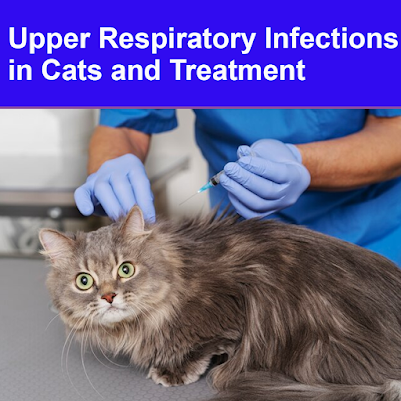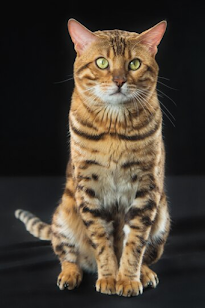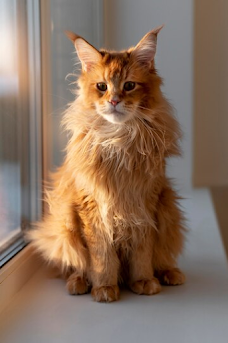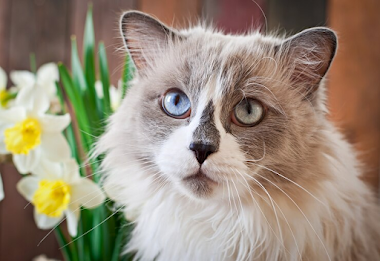Upper Respiratory Infections in Cats and Treatment
Upper respiratory diseases are exceptionally normal in felines, particularly little cats and haven felines. These infectious diseases, which cause runny noses and throat aggravation, normally answer well to treatment with anti-toxins and strong consideration. A few felines can turn out to be very sick, however, and serious cases can advance to pneumonia. Immunizations assist with safeguarding felines from most respiratory sicknesses and assist with diminishing the seriousness of diseases that do happen.How Do Upper Respiratory Infections Occur?
The term upper respiratory tainting depicts a confounding variety of disorders that can happen alone or in a mix. Generally, these disorders produce a similar plan of incidental effects that basically impact the upper respiratory part (for instance the nose and throat).Signs of Cat Upper Respiratory Infections
The side effects of upper respiratory diseases in felines can differ in seriousness, however, regularly incorporate any or the entirety of the accompanying:
Symptoms
- Fever
- Nasal discharge
- Sneezing
- Runny eyes
- Reddened eyes (conjunctivitis)
- Squinting
- Cough
- Hoarse voice
- Snoring
- Drooling
- Gagging
- Rapid breathing
- Loss of appetite
- Lethargy
What Leads to Cats' Upper Respiratory Infections?
Most cases are because of viral contaminations with herpesvirus as well as calicivirus. Various creatures cause upper respiratory diseases in felines, yet the normal offenders are:
- Feline herpesvirus 1, also called rhinotracheitis virus
- Feline calicivirus of which there are several strains
- Chlamydophila felis, a bacteria
- Mycoplasma spp, a type of bacteria
Unvaccinated felines, felines that are under pressure, and felines that are immunosuppressed given conditions like cat leukemia infection (FeLV) or cat immunodeficiency infection (FIV) are additionally at a more serious gamble. Level-confronted felines, like Persians, appear to be especially defenseless to upper respiratory contaminations.
Upper respiratory diseases are spread employing the release from the nose and eyes, either by direct contact with tainted felines, spray pollution, or by contact with objects like dishes or bedding that have been sullied with discharges from contaminated felines
How Do Veterinarians Identify Cat Upper Respiratory Infections?
A determination of upper respiratory disease can frequently be made based on history and side effects. Further symptomatic tests should be possible by analyzing the nasal or visual emissions to distinguish the life forms causing the illness.
Felines ought to stay silent and happy throughout an upper respiratory disease. Cautiously clear away release off of the eyes and nose, and direct all prescriptions as endorsed by your vet. A humidifier can frequently assist with overseeing clogs.
Since felines could lose their feeling of smell, their cravings might endure. You can take a stab at taking care of their number one canned food or a solution diet that offers extra nourishing help if your feline's craving is decreased. On the off chance that your feline will not eat or drink by any means, counsel your veterinarian expeditiously.
Most cases clear up in something like 10 days, albeit at times upper respiratory contaminations will hold tight for half a month. For cases that don't answer the standard strong treatment, antiviral meds can be attempted. In situations where felines will not eat or drink or have serious breathing challenges, hospitalization might be required. Intravenous liquids might be given to forestall drying out and oxygen treatment can be utilized if necessary.
Felines that experience delayed or rehashed episodes of respiratory diseases ought to be checked for FeLV and FIV regardless of whether the pet tried negative already.
Treatment Options for Upper Respiratory Infections
For most felines, treatment is pointed toward dealing with the side effects. However most cases are brought about by infections, anti-infection agents might be recommended to battle bacterial diseases that frequently happen optionally to viral contaminations. An eye treatment might be endorsed too, and drugs to assist with controlling the nasal clog and release may likewise be recommended by your veterinarian.Felines ought to stay silent and happy throughout an upper respiratory disease. Cautiously clear away release off of the eyes and nose, and direct all prescriptions as endorsed by your vet. A humidifier can frequently assist with overseeing clogs.
Since felines could lose their feeling of smell, their cravings might endure. You can take a stab at taking care of their number one canned food or a solution diet that offers extra nourishing help if your feline's craving is decreased. On the off chance that your feline will not eat or drink by any means, counsel your veterinarian expeditiously.
Most cases clear up in something like 10 days, albeit at times upper respiratory contaminations will hold tight for half a month. For cases that don't answer the standard strong treatment, antiviral meds can be attempted. In situations where felines will not eat or drink or have serious breathing challenges, hospitalization might be required. Intravenous liquids might be given to forestall drying out and oxygen treatment can be utilized if necessary.
Felines that experience delayed or rehashed episodes of respiratory diseases ought to be checked for FeLV and FIV regardless of whether the pet tried negative already.
The prognosis of upper respiratory infections in cats
Most felines with gentle to direct disease answer well to steady treatment with anti-microbials depending on the situation. Felines with serious contaminations or basic diseases might make some harder memories recuperating, are more vulnerable to pneumonia, and incidentally bite the dust because of confusion of respiratory disease.
On account of a herpes viral disease, felines that recuperate convey the infection perpetually and can have eruptions occasionally. With herpesvirus, the disease is generally as it were "dynamic" after events of stress and stays asymptomatic for the remainder of the time.
On account of a herpes viral disease, felines that recuperate convey the infection perpetually and can have eruptions occasionally. With herpesvirus, the disease is generally as it were "dynamic" after events of stress and stays asymptomatic for the remainder of the time.
How Upper Respiratory Infections Can Be Prevented
Antibodies against both herpesvirus and calicivirus are business-as-usual inoculation conventions that are suggested by veterinarians. Youthful cats are not completely safeguarded until a full series of promoter immunizations have been given.Limiting pressure, as well as forestalling contact with tainted felines, can likewise decrease the occurrence of upper respiratory diseases.



















No comments:
Post a Comment